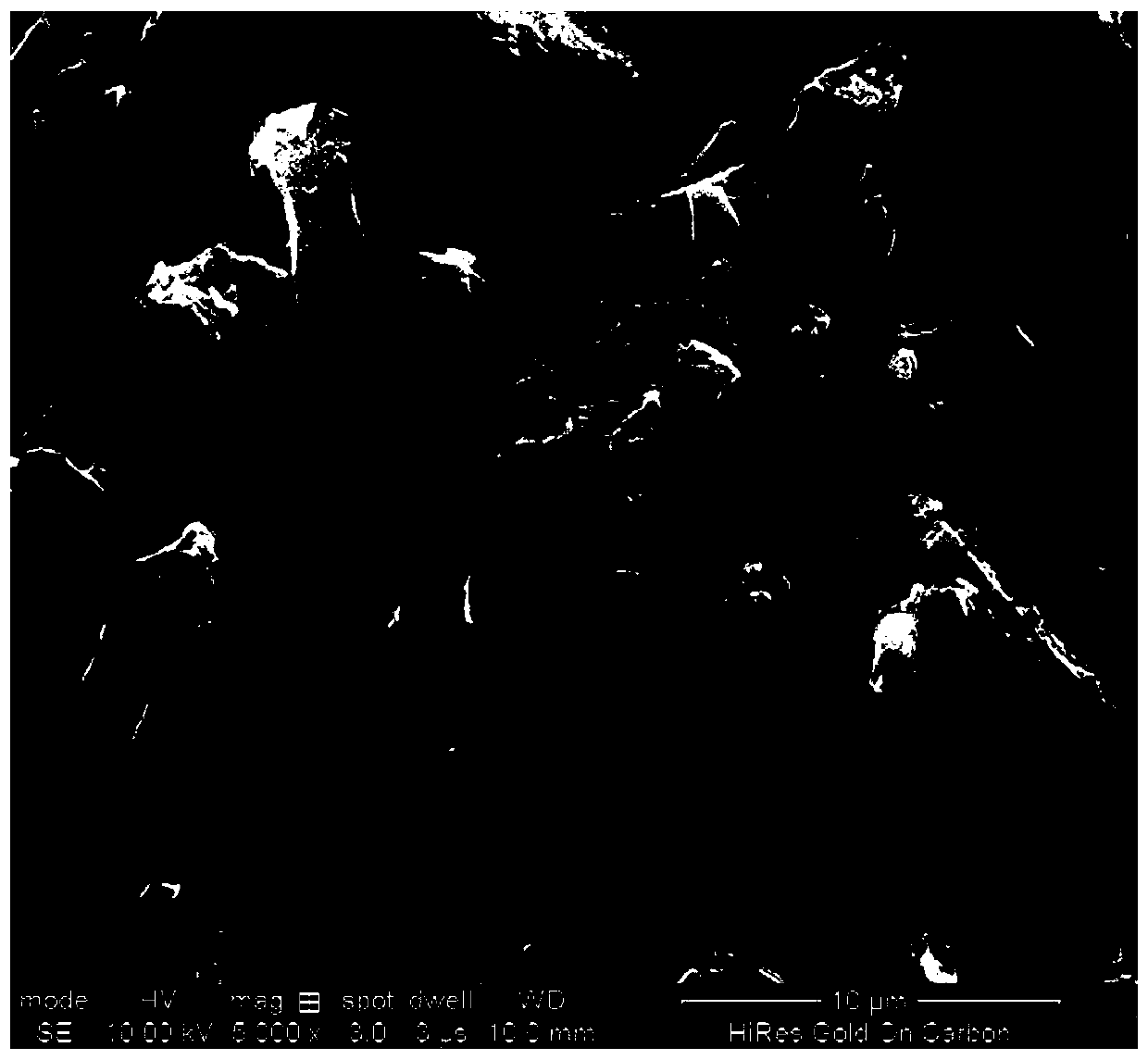Anode material for lithium-sulfur rechargeable battery and preparation method of anode material
A technology for lithium-sulfur secondary batteries and positive electrode materials, applied in battery electrodes, lithium storage batteries, non-aqueous electrolyte storage batteries, etc., can solve the problem of low discharge specific capacity, achieve good electrochemical performance, high sulfur loading, and long service life long effect
- Summary
- Abstract
- Description
- Claims
- Application Information
AI Technical Summary
Problems solved by technology
Method used
Image
Examples
Embodiment 1
[0028] Example 1
[0029] Crush the discarded durian shells collected from fruit shops and other places, cut them into small pieces, wash them with deionized water, and dry them in a blast drying oven with a temperature of 110°C for 12 hours. Pre-carbonize the dried product.
[0030] Due to the hard texture of durian shell, which is significantly different from mangosteen bark, electrochemical tests are required to determine its pre-carbonization temperature. A small amount of samples were taken for thermogravimetric testing (TGA). It was found that durian shells began to lose weight at a temperature of 170°C, and ended at a temperature of 700°C. The weight was almost stable, and the pre-carbonization temperature was determined to be 700°C.
[0031] The pre-carbonization temperature is set at 700° C., the reaction furnace is filled with nitrogen (purity above 99%), and the carbonization reaction time is 3 hours. Fully stir and mix the pre-carbonized product and potassium hyd...
Embodiment 2
[0037] Adopt the preparation method similar to embodiment 1, difference is:
[0038] (1) The temperature used for pre-carbonization is 400°C and the time is 7h;
[0039] (2) In potassium hydroxide activation, the mass ratio of potassium hydroxide to durian shell after pre-carbonization treatment is 3:1; the activation temperature is 700°C, and the activation time is 5h;
[0040] (3) The mass ratio of the activated carbon material carrier to the sulfur element is 4:6, and it is ground in a ball mill jar at a rotating speed of 200rpm, and the grinding time is 3h. The ground mixture is placed in a vacuum environment and heated at 140°C. Keep it warm for 24 hours, and cool to obtain the positive electrode material.
[0041] The positive electrode material obtained above was made into an electrode sheet by the same method as in Example 1 and then installed in a lithium-sulfur secondary battery. It has been verified that the positive electrode material has a high discharge specific...
Embodiment 3
[0043] Adopt the preparation method similar to embodiment 1, difference is:
[0044] (1) The temperature used for pre-carbonization is 800°C and the time is 1h;
[0045] (2) In potassium hydroxide activation, the mass ratio of potassium hydroxide to durian shell after pre-carbonization treatment is 5:1; the activation temperature is 1000°C, and the activation time is 1h;
[0046] (3) The mass ratio of the activated carbon material carrier to the sulfur element is 4:1, and it is ground in a ball mill at a rotating speed of 500rpm, and the grinding time is 0.5h. Keep the temperature for 6 hours, then cool to obtain the positive electrode material.
[0047] The positive electrode material obtained above was made into an electrode sheet by the same method as in Example 1 and then installed in a lithium-sulfur secondary battery. It has been verified that the positive electrode material has a high discharge specific capacity and service life.
PUM
| Property | Measurement | Unit |
|---|---|---|
| Specific surface area | aaaaa | aaaaa |
| Pore volume | aaaaa | aaaaa |
| Specific surface area | aaaaa | aaaaa |
Abstract
Description
Claims
Application Information
 Login to View More
Login to View More - R&D
- Intellectual Property
- Life Sciences
- Materials
- Tech Scout
- Unparalleled Data Quality
- Higher Quality Content
- 60% Fewer Hallucinations
Browse by: Latest US Patents, China's latest patents, Technical Efficacy Thesaurus, Application Domain, Technology Topic, Popular Technical Reports.
© 2025 PatSnap. All rights reserved.Legal|Privacy policy|Modern Slavery Act Transparency Statement|Sitemap|About US| Contact US: help@patsnap.com


